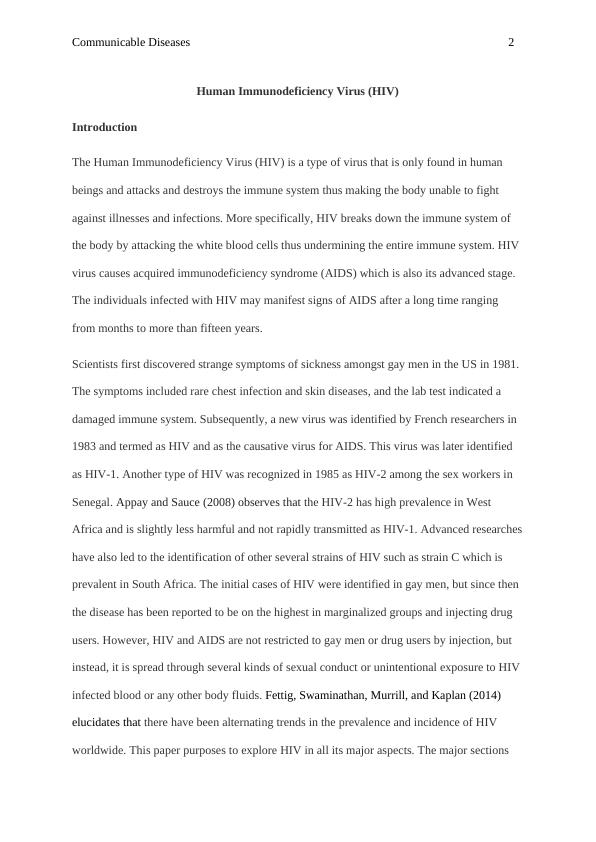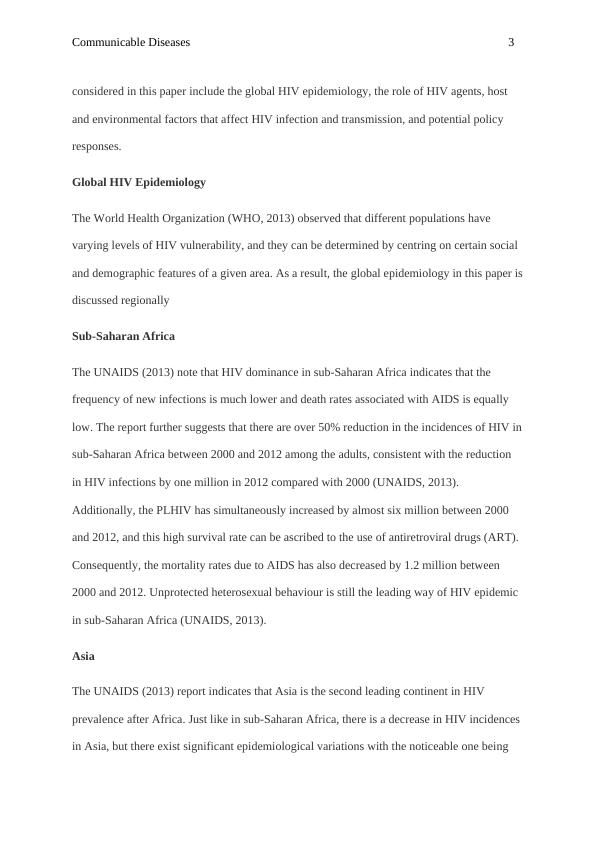Communicable Diseases: Global HIV Epidemiology, Role of Agent, Host and Environmental Factors
Critical review of the literature on one emerging or re-emerging communicable disease threat, including the role of agent, host and environmental factors, and potential policy responses.
18 Pages5405 Words228 Views
Added on 2023-06-04
About This Document
This paper explores HIV in all its major aspects including global HIV epidemiology, the role of HIV agents, host and environmental factors that affect HIV infection and transmission, and potential policy responses.
Communicable Diseases: Global HIV Epidemiology, Role of Agent, Host and Environmental Factors
Critical review of the literature on one emerging or re-emerging communicable disease threat, including the role of agent, host and environmental factors, and potential policy responses.
Added on 2023-06-04
ShareRelated Documents
End of preview
Want to access all the pages? Upload your documents or become a member.
The Impact of National Strategies of HIV/AIDS Among Women in South-West Nigeria
|11
|3817
|54
Analysis of Community Outbreak of HIV/AIDS
|5
|802
|466
HSH705, Needs Assessment And Health Program Planning
|28
|3073
|44
Overview of HIV Infection
|17
|5243
|172
Community Health And Population Assignment
|9
|1988
|12
HIV Infection Among Haitian College Students in the USA
|11
|3261
|148




